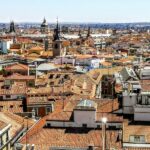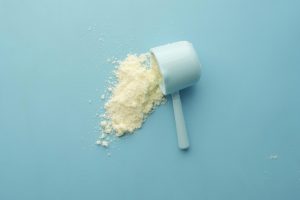Ramón maría del valle-inclán hijos
Wikipedia
In 1910 he embarks with his wife on a theater tour that takes him to Latin America. On his return, while he continues to write, he lives between Galicia and Madrid, where he obtains a chair of aesthetics at the School of Fine Arts. When the Great War broke out, Valle sympathized with the Allied side and in 1916 he visited the French front.
He has already traveled the world, he has seen the war and it is time for the esperpento. The sarcasm and mockery of the verses of La pipa de kif, of 1919, already announce it. From 1920 are La enamorada del rey, Farsa y licencia de la Reina castiza and his immortal Divinas palabras and Luces de Bohemia. The esperpento is the comic side of the tragic side of life, it is the grotesque of every day, of the human being, it is the scorn unveiled and brought to the foreground. «The classic heroes reflected in concave mirrors give the esperpento», defines Valle-Inclán. His work will never get rid of that bitter laughter, that grimace that can end in laughter or tears. Los cuernos de don Friolera, Las galas del difunto and La hija del capitán, written between 1925 and 1927, are covered with esperpento.
Divinas palabras
Este artículo necesita citas adicionales para su verificación. Por favor, ayude a mejorar este artículo añadiendo citas de fuentes fiables. El material sin fuente puede ser cuestionado y eliminado.Buscar fuentes: «Ramón del Valle-Inclán» – noticias – periódicos – libros – académico – JSTOR (noviembre de 2015) (Aprende cómo y cuándo eliminar este mensaje de la plantilla)
En 1895 se trasladó de nuevo a Madrid, trabajando como funcionario del Ministerio de Instrucción Pública y Bellas Artes. En Madrid realizó algunas traducciones de José María de Eça de Queirós, Alexandre Dumas, Gabriele D’Annunzio, Jules Barbey d’Aurevilly, Paul Alexis y Matilde Serao. A pesar de sus dificultades económicas, empezó a hacerse notar en las tertulias de muchos cafés de importancia cultural de Madrid, como el Café Gijón, y a llamar la atención por su actitud dandi y su aspecto excéntrico.
En 1916 publicó en la revista cubana Labor Gallega un poema en lengua gallega con el título de Cantiga de vellas, que es su más valiosa aportación a la literatura gallega.
Pío barojasescritor español
Este artículo necesita citas adicionales para su verificación. Por favor, ayude a mejorar este artículo añadiendo citas de fuentes fiables. El material sin fuente puede ser cuestionado y eliminado.Buscar fuentes: «Ramón del Valle-Inclán» – noticias – periódicos – libros – académico – JSTOR (noviembre de 2015) (Aprende cómo y cuándo eliminar este mensaje de la plantilla)
En 1895 se trasladó de nuevo a Madrid, trabajando como funcionario del Ministerio de Instrucción Pública y Bellas Artes. En Madrid realizó algunas traducciones de José María de Eça de Queirós, Alexandre Dumas, Gabriele D’Annunzio, Jules Barbey d’Aurevilly, Paul Alexis y Matilde Serao. A pesar de sus dificultades económicas, empezó a hacerse notar en las tertulias de muchos cafés de importancia cultural de Madrid, como el Café Gijón, y a llamar la atención por su actitud dandi y su aspecto excéntrico.
En 1916 publicó en la revista cubana Labor Gallega un poema en lengua gallega con el título de Cantiga de vellas, que es su más valiosa aportación a la literatura gallega.
Tirano banderas
Valle-Inclán’s biography has aroused the interest of several biographers, as well as researchers and literary critics, and also of writers and literati themselves, such as Ramón Gómez de la Serna, Melchor Fernández Almagro, Francisco Umbral and Manuel Alberca.
It was at this time when Valle-Inclán began to cultivate his particular clothing: cape (at first a Mexican poncho), shawl, hat, white leggings,[note 12] and above all, his long and characteristic beards, the «goat beards» of which Rubén Darío speaks in a poem dedicated to the author. He collaborates from Pontevedra in the magazine Blanco y Negro. It is during this period in Pontevedra that Ramón de Valle Inclán appears under his own name, as he names himself on the cover of his first book. Once this stage was over, there was little left for him to do in the provinces, he went to Madrid on what would be his second trip to the capital.
By this time some members of the generation of ’98 were working in a coordinated manner in various creative activities, and each of its components met and exchanged ideas at their meetings in different cafes, such as the Nuevo Café de Levante; and cafes-concerts, such as the popular music-hall Central Kursaal, located in the Plaza del Carmen. There a young cupletista called Anita Delgado performed there, with whom the maharajah of Kapurthala fell in love, an event that was commented in great detail in cafés and newspapers and weeklies of the time, being Valle-Inclán himself one of the intermediaries of a story that ended in marriage.[note 19][note 19










Más historias
Decorar con césped artificial: un estilo innovador para mentes creativas
Hacer manualidades contribuye al bienestar
Ideas para amueblar un cuarto juvenil